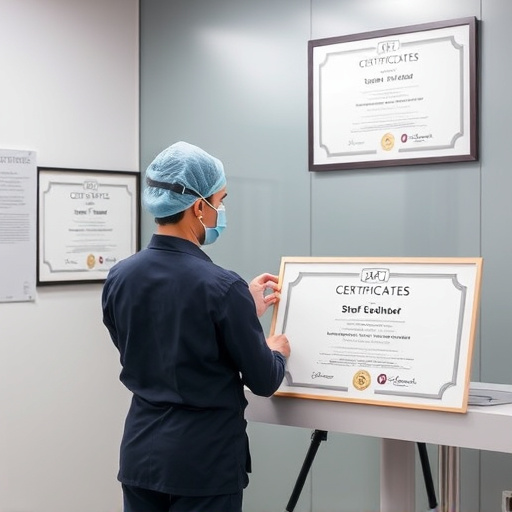The text explores how extreme weather conditions like typhoons can expose automotive sound quality, with a focus on the K&N Typhoon intake system's performance. This system enhances engine noise, providing enthusiasts with a more robust and distinct driving experience, as evidenced by positive user reviews. It combines improved airflow, immersive sound, and better vehicle performance, though installation may be more complex than standard intakes. The K&N Typhoon is ideal for those seeking both power gains and enhanced auditory pleasure, as detailed in its reviews.
Typhoons, while powerful natural phenomena, can also significantly impact sound quality, from the rumble of heavy rain to the howling wind. This article delves into the unique challenges and opportunities presented by these extreme weather events on audio experiences. We explore the role of K&N Typhoon intake systems, renowned for their performance enhancements, in mitigating sound distortion and enhancing clarity during typhoons. Through a comprehensive review, we analyze their features, benefits, and drawbacks, providing insights for audiophiles navigating these stormy conditions.
- Understanding Typhoon Sound Quality and Its Impact
- The Role of K&N Typhoon Intake Systems in Enhancing Audio Experience
- Comprehensive Review: Features, Benefits, and Drawbacks
Understanding Typhoon Sound Quality and Its Impact

Understanding Typhoon Sound Quality and Its Impact
In the context of automotive performance, sound quality is a multifaceted aspect that goes beyond mere volume. For enthusiasts, especially those who own high-performance vehicles like those equipped with the K&N Typhoon intake system, assessing sound quality during extreme conditions like typhoons offers valuable insights into engine health and overall driving experience. Typhoons, with their powerful winds and intense atmospheric pressure changes, can significantly alter the normal operating sounds of a vehicle, revealing potential issues or highlighting the superior design characteristics of components like the intake system.
The K&N Typhoon intake system, renowned for its performance enhancements, also contributes to an enriched sound profile. During a typhoon, this system might be put under stress as air pressure fluctuates, providing a real-world testbed for its effectiveness. In contrast to stock intake systems that may emit dull or muffled sounds under extreme conditions, the K&N Typhoon’s design often results in a more robust and distinct engine noise, reflecting its ability to draw in cold, dense air efficiently. This enhanced sound quality not only pleases audiophiles but also offers drivers valuable feedback on their vehicle’s performance potential and mechanical integrity.
The Role of K&N Typhoon Intake Systems in Enhancing Audio Experience

The K&N Typhoon intake systems play a pivotal role in enhancing sound quality, particularly for automotive enthusiasts seeking an elevated audio experience. These high-performance filters are designed to optimize airflow, allowing for a more efficient and powerful engine sound. By improving air intake, the system captures and amplifies the inherent sounds of the engine, creating a dynamic and immersive auditory atmosphere within the vehicle.
In terms of a K&N Typhoon intake system review, users consistently praise its ability to deliver a deeper, richer, and more distinctive exhaust note without compromising on performance. The advanced design, incorporating high-flow filters and optimized air paths, ensures that every engine’s unique characteristics are highlighted, providing drivers with a personalized and captivating sound journey.
Comprehensive Review: Features, Benefits, and Drawbacks

The K&N Typhoon intake system boasts a comprehensive design, offering both performance and aesthetic appeal for vehicle owners. This high-flow air intake kit is meticulously engineered to enhance engine power and torque while providing a unique styling element. The system’s key features include a large-diameter filter, mandrel-bent tubing, and an adjustable cold air intake, all contributing to improved sound quality and overall engine performance.
While the K&N Typhoon provides distinct advantages such as increased horsepower, better fuel efficiency, and a robust sound, it may not be suitable for all vehicles or driving conditions. Some drawbacks include potential noise levels that might be louder than stock intakes, installation complexities, and cost, which could be higher compared to other options in the market. However, for enthusiasts seeking a balance between performance and an enhanced driving experience, the K&N Typhoon intake system review highlights its exceptional capabilities.
In conclusion, understanding the impact of sound quality during typhoons is paramount, especially for audiophiles seeking optimal listening experiences. The K&N Typhoon intake systems emerge as a popular choice, offering enhanced audio clarity and protection against environmental noise. This comprehensive review highlights their features, benefits, and drawbacks, serving as a valuable guide for those looking to improve their sound environments during such events. When it comes to safeguarding your audio setup, the K&N Typhoon intake system review underscores its importance in creating a serene and immersive listening experience even amidst turbulent conditions.














